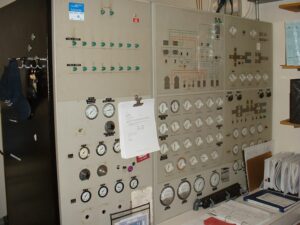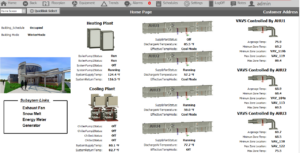The Evolution of Building Automation Systems
The Building Automation System (BAS) has changed dramatically over the past few decades. Even the name of these systems has changed. Terms such as Direct Digital Control (DDC) System, Facility Management System (FMS), Energy Management System (EMS), and a host of others, all refer to the same thing. And the parts and pieces that comprise these systems have changed dramatically. In the early days, the BAS consisted of pneumatic and electro-mechanical components. Many of these systems included various disparate components, often operating in a standalone fashion.
Technology is constantly changing, and the BAS is no exception to these rapidly accelerating changes. While pneumatics still holds a limited place in some BAS installations, most systems installed today consist of electronic controllers and components, void of any pneumatics. Early versions of electronic BAS platforms were proprietary in nature. Controls vendor “A” did not produce a system that would communicate with Controls vendor “B”. There was no such thing as open protocol. While a convincing case can be made that pneumatic systems were the first open protocol system, BAS systems installed today are designed to function as open protocol systems. Proprietary BAS platforms are a thing of the past. Terms such as Modbus, LON, and BACnet are used to describe the open protocol nature of various BAS platforms. In the last decade, BACnet has emerged as the industry standard for building automation.

The BAS – Asset or Liability?
The initial cost of a BAS is relatively small with respect to the overall cost of the facility. When properly engineered and skillfully programmed, the BAS functions as the backbone of the facility. It performs autonomous decisions to accurately control HVAC equipment while optimizing energy consumption. An expertly designed and applied BAS will control building systems to maintain indoor temperature, humidity, air quality, and lighting levels, etc. This type of BAS is one of the greatest assets a facility operator can have.
However, when misapplied, the operational costs associated with the BAS can be detrimental. Significant amounts of energy can be wasted due to equipment that is improperly controlled, resulting in increased utility costs. Indoor comfort conditions and air quality become difficult to maintain. The BAS, designed to be an asset to the facility, has now become a liability. In an educational facility this can negatively impact learning. A healthcare facility may be adversely affected by increased infection rates and slower patient recovery. A manufacturing facility may experience unfavorable output resulting from equipment malfunctions or low employee retention rates due to drastic temperature and humidity swings on the production floor. The ripple affect due to a poorly operating BAS can have a tremendous impact on a building and its occupants. The resulting problems may persist for years if not corrected.

“Assets” for $1000 Please Alex
How can a building owner avoid the jeopardy of a poorly engineered BAS? Stay tuned for part 2 of this blog, Building Automation Systems 201.





